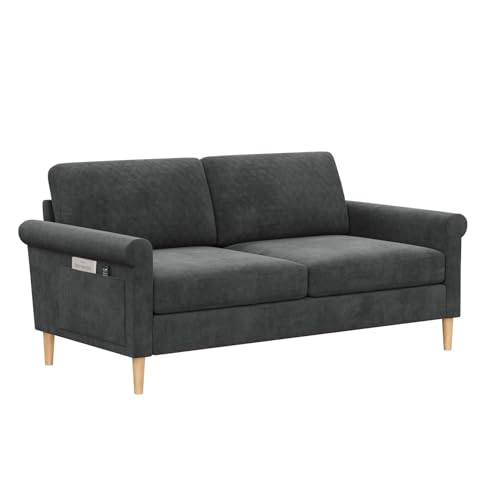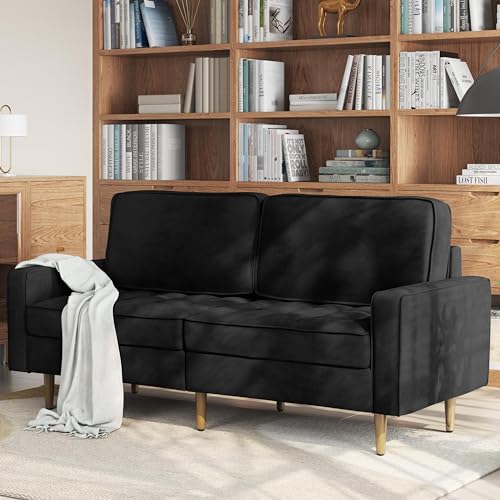Guide To 2 Seater Leather And Fabric Sofa: The Intermediate Guide The …
페이지 정보
작성자 Marcella 댓글 0건 조회 2회 작성일 24-11-06 07:13본문
 Choosing Between a 2 Seater Leather and Fabric Sofa
Choosing Between a 2 Seater Leather and Fabric SofaIt can be difficult to decide between leather and fabric when you're looking for a new couch. This is especially true if you aren't a professional in furniture.
If you have kids or live in a smaller apartment the leather option might be best for you. It is easy to clean and looks great in a lot of homes.
Comfort
The sofa is typically the focal point in many people's homes and is a significant purchase. You want a sofa you can sit on for many hours and that looks good and will stand the test of time. It can be difficult to decide between fabric and leather, but you should consider your lifestyle, budget and your priorities prior to making a decision.
Leather is a luxurious material with a luxurious feel and is elegant in the home. It is tough, stain-resistant, resistant to pets and children, and can last for a long time if properly taken care of. However, it can be more expensive initially and will require regular conditioning to avoid peeling or cracking.
small fabric 2 seater sofa sofas are available in a wide range of styles, colours and fabrics. They can be cheaper than leather ones. They are also more comfortable and more cosy with the capacity to feel "broken in" from the start. They are prone to dust mites and pet hairs and may need frequent cleaning. There are now hypoallergenic fabrics as well as new technology available.
The life-span of a small fabric 2 seater sofa sofa will depend on the quality of the fabric, but most fabrics can last for up to 15 years if they are properly taken care of. Regular vacuuming and deep cleaning aid in keeping the fabric clean and free of odours and spills. They also tend to shrink and flatten over time, just as leather. In addition, a lot of fabrics have been treated with chemicals to make them stain-resistant and flame retardant. These chemicals can release volatile organic compounds that can affect indoor air quality and cause allergies.
Durability
We typically choose sofas with fabrics that are very durable, especially if we have children or pets. You don't need to spend lots of money up front in case you'll regret it after the very first smudge or claw. You don't want to buy something cheap that can't withstand everyday use.
Leather, however is extremely durable and has incredible tear strength. It also lasts up to 4 times longer than fabric and is naturally resistant to fading, cracking and flaking over time. It can also be conditioned to replenish its natural oils, and look as good as new.
Fabrics are a more affordable option and come in a range of different colors patterns, patterns, and textures to match any interior design. They are also easier to clean than leather and can withstand a fair amount of wear and tear, however, they can be more prone to moisture and suffer from fading over time.
Microfiber is a good choice for its durability and is available in a variety of colors, however it's not as durable as genuine leather and will not withstand scratches. It is still a great choice for families due to its ability to resist spills and stains. It's also easy to clean with an aqueous cloth.
Suede is more difficult to clean and repair than leather. It can also lose its shape if it is not regularly conditioned and can feel quite rough to the touch. It's also a very thin material, and therefore may not be as sturdy as cowhide or sheepskin leather.
Allergens
Fabrics can have a major impact on allergies. It is crucial to know how different options perform. Fabrics tends to retain allergens such as dust mites and pet dander which can cause symptoms such as asthma, hay fever rhinitis and eczema. These fabrics are perfect for them to flourish.
Leather, on the contrary is not a source of allergens and offers a constant level of comfort, no matter the season. However, it could cause dermatitis, especially for those with contact dermatitis or are sensitive to the chemicals used in tanning. Utilizing vegetable-tanned leather and ensuring an active skincare routine is crucial to reducing skin reactions.
Sofas made of leather and fabric offer a high degree of durability, but the choice of material will determine how long it will last over time. A good quality material will withstand fading or sagging and can be able to withstand spills body oils, spills and everyday use. Many modern couches come with stain resistant treatments to make cleaning easier.
While you might not be able completely prevent an allergic reaction from the leather sofa, it can help to avoid allergens by keeping a lint roller nearby and regularly vacuuming your living area. This will lessen the amount of dirt, pet hair, and dust mites you find on your sofa. If you are still suffering from allergies, replace your sofa with a more hypoallergenic one. For example, a leather sofa made of synthetic or vinyl is less likely to hold dust mites and pet dander, and can help you breathe more easily.
Scratches
It is crucial to think about the amount of wear and tear you can expect for a leather couch. How long a sofa will last is contingent on the finish, colour and leather quality. You also want to ensure that the couch is strong enough to withstand spills and other messes. You can accomplish this by choosing a couch with a sturdy wooden frame and high-density foam cushions.
Leather can be damaged due to many different reasons such as stretching it, marking territory, or reliving tension. Scratches can be of various severity. They vary from minor surface scratches to severe cuts or punctures. Minor scratches can be repaired with a leather conditioner. This will restore the balance between moisture and oil within the leather and prevent it from drying out or cracking. The extent of damage will determine the kind of treatment needed.
If you have cats, it's recommended to trim their nails regularly to assist in stopping them from scratching your sofa. You can also redirect the scratching behavior by providing them with alternative scratching surfaces, such as sisal rope or cardboard. You can also use a pet safe furniture polish which you can apply using an easy, clean cloth.
In addition to cleaning your leather couch regularly, it is also recommended to keep it out of direct sunlight and sources of heat which can dry out the leather. This can cause cracks in the leather. Repairing this is usually difficult and requires the reupholstery. It is recommended to use a leather conditioner to keep the leather and fabric 2 seater sofa soft.
Smell
Leather couches tend to smell different than 2 seater fabric couch. This is because it's porous and can absorb unwanted odors, such as body odor, smoke or food easily. The good thing is that the smells typically disappear over time and especially when you use a nontoxic, fragrance-free cleaner.
If the smell is intense, it could mean there's something wrong with the foam. This is typically caused by chemical off-gassing resulting from petroleum-based polyurethane. If this is a problem you should look for couches that are manufactured with CertiPUR US certified latex or natural latex.
A second way to identify faux leather is by feeling for bumps or texture on the back of a sofa. This is a sign that the leather is bonded and not authentic top grain. You can also perform a visual check by tilting the sofa over and observing any visible upholstery backing. If so, it's probably an artificial material such as polyurethane or polyester. These will have a very different smell than true leather.
Regularly cleaning your leather sofa will keep it looking and smelling fantastic. This will keep it looking great and smelling good and will also stop it from becoming stiff or brittle over time. Start by vacuuming and dusting the couch and then wiping it clean with a dry cloth and baking soda (a good natural way to eliminate the smell). It is recommended to do this at least every two weeks or more to get rid of dust and dirt build-up. Then, apply a leather conditioner to preserve the color and texture.

댓글목록
등록된 댓글이 없습니다.